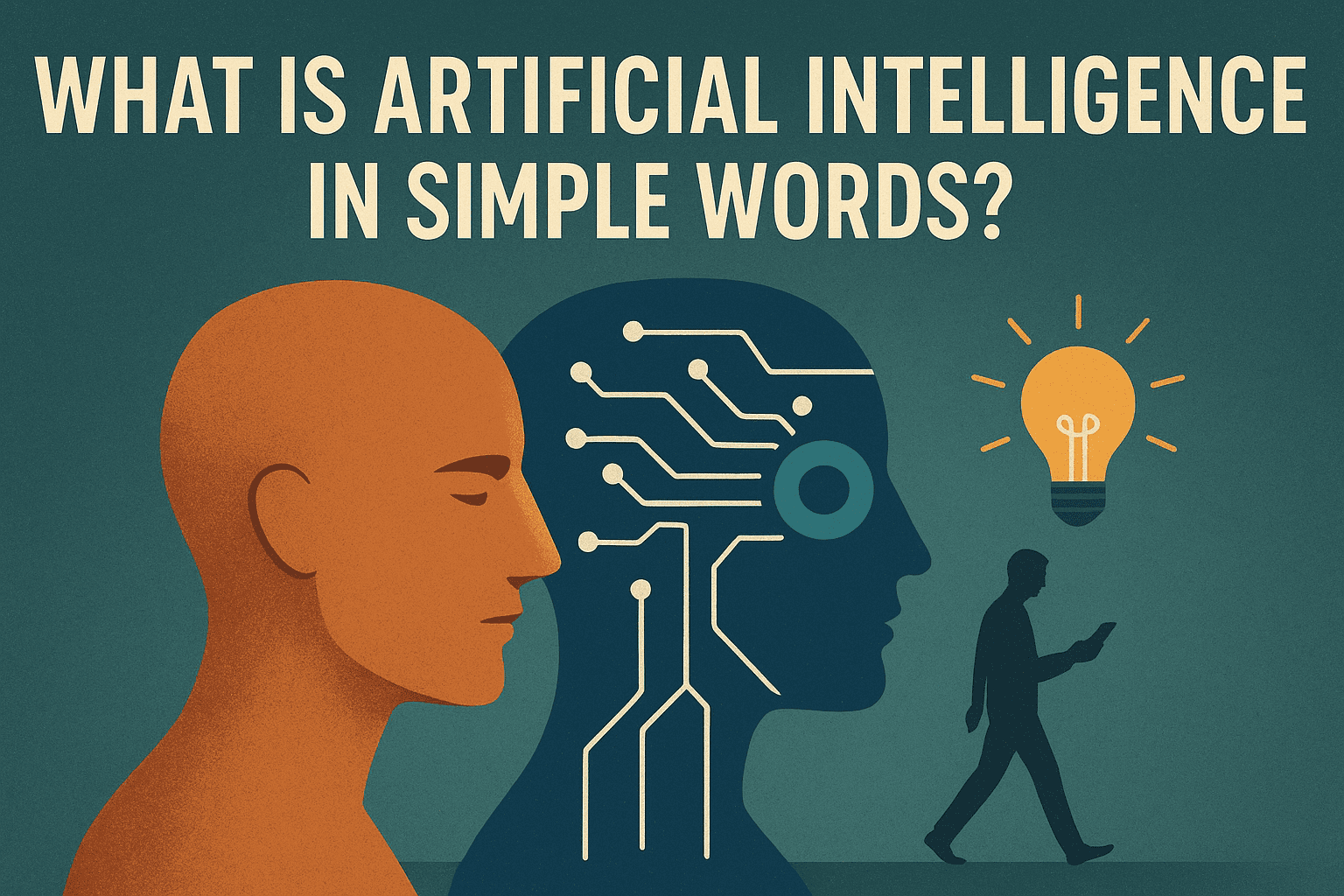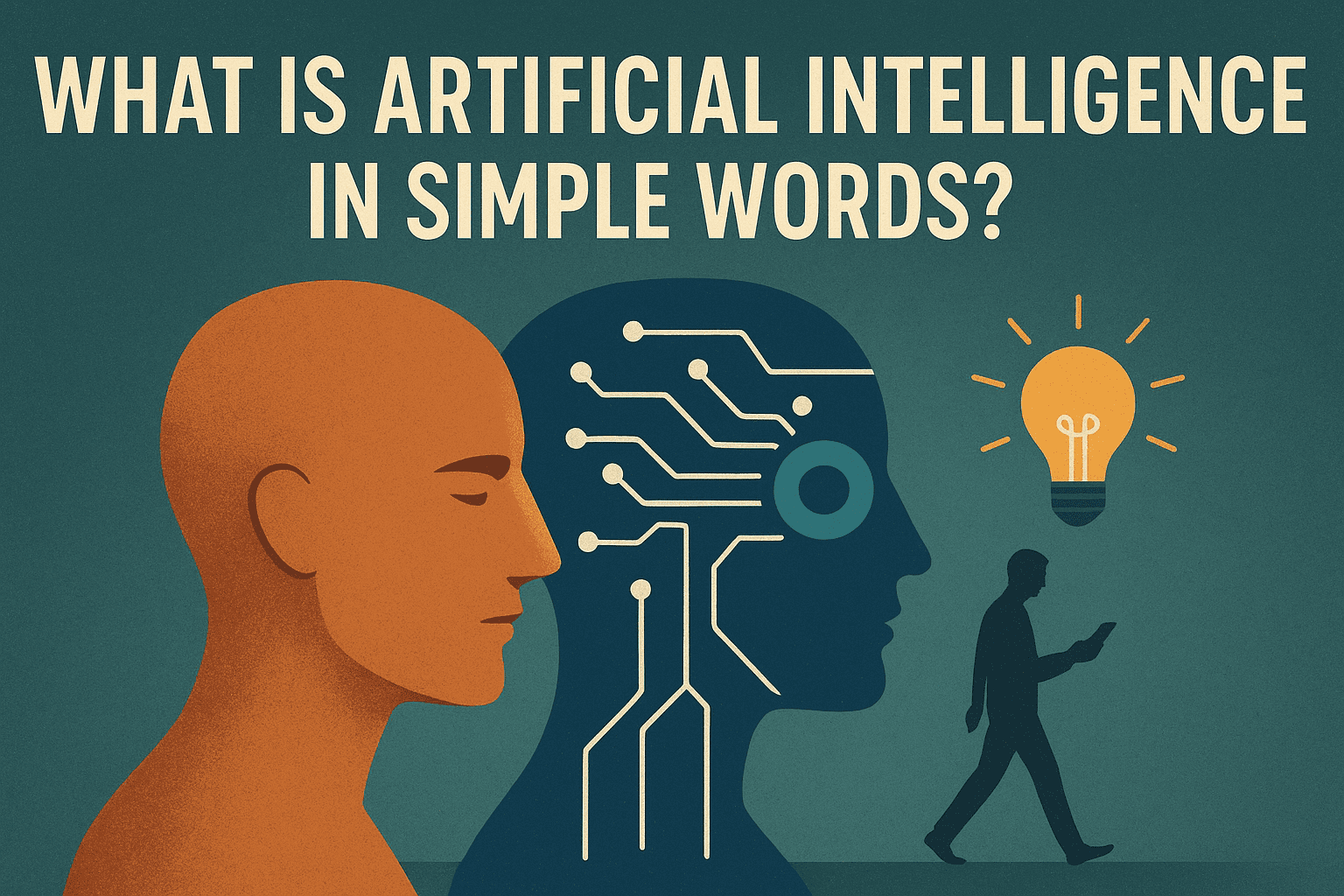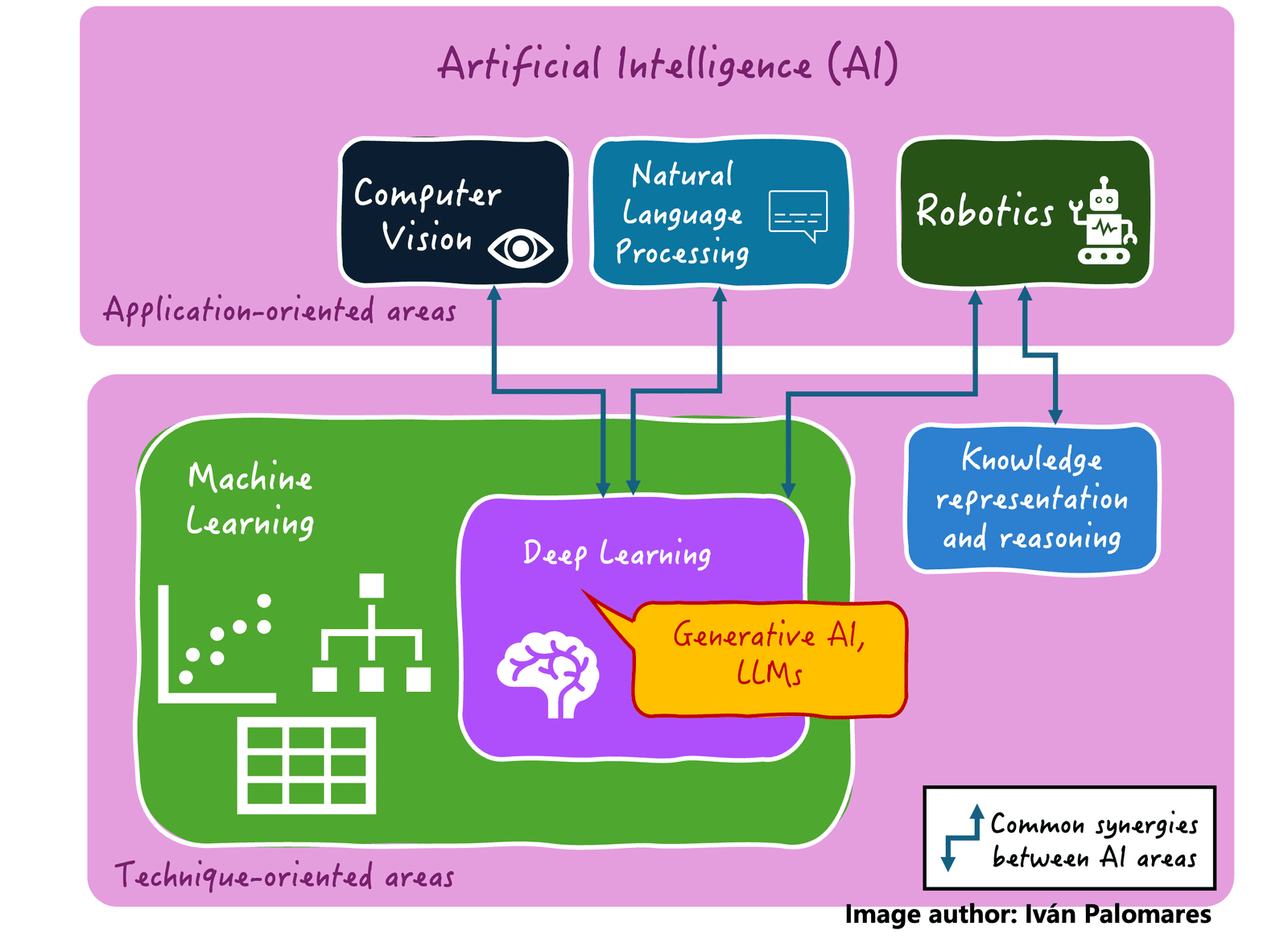Jobs & Careers
What is Artificial Intelligence in Simple Words?


Image by Editor | ChatGPT
# Introduction
Everyone talks about artificial intelligence (AI) in recent times, and chances are, depending on whom you ask, they may explain to you what AI is in a different way: often using technical, almost alien-like terms, and sometimes in simple terms. This article is intended to take the latter direction, and explain in simple words what AI is, its capabilities and limits, and some key areas or building blocks that are part of AI nowadays.
# What is AI? Capabilities and Limits
AI is a branch of computer science that focuses on the development of computer systems capable of mimicking human or animal intelligence skills to solve a particular problem or task. The intelligent traits they can emulate, depending on the specific AI system, include reasoning, predicting future or unknown facts, visual perception, communicating with humans or other AI systems, and interacting with the environment, to name a few.
One salient capability in most modern AI systems, which permeates virtually all the skills mentioned above, is the ability to learn from data. Just like a small child who learns by observing and being exposed to examples of anything (words, images, actions, etc.), AI systems learn from lots of data examples to perform complex tasks like predictions, inference, communication in human language, and much more.
Some might be surprised to hear that AI is not a 21st-century invention: in fact, the field was born in the middle of the last century. However, it is thanks to advances in learning from data — and thanks to developments in computation and data availability — that AI has experienced its biggest progress over the last decade and a half, with generative and language models like ChatGPT being clear examples of the latest, high-impact achievements.
But AI also has its limitations: it does not truly “understand” the world like humans do (everything is understood and dealt with mathematically, so to speak!), can make mistakes if it has learned from poor-quality data, and usually struggles with tasks that require common sense or human sensibilities. The vast data and computing power needed also constitute high costs.
# Areas of AI
Let’s outline the main areas of AI and some key points to gain a better understanding of them.


Areas of artificial intelligence and common symbiotic relationships between them | Image by Author
- In the early years of AI, knowledge representation and reasoning were active subjects of research, focuses on building software programs that could reason and draw conclusions upon real-world facts and knowledge represented in a machine-understandable fashion. Much of the logic between autonomous agents (sometimes implemented in robotic systems capable of interacting with the real world) relies on these techniques, and the recent rise of agentic AI solutions is reviving interest in this subdomain.
- Machine learning is by far the most widespread area of AI at present: almost every modern AI system uses approaches to learn from data to solve a task like classifying images, predicting prices or future sales, recommending products to customers, and more.
- Deep learning is like an “evolved form” of machine learning: larger and more complex systems that learn from immense datasets to address more challenging tasks. Interestingly, computer vision and natural language processing applications — like visually recognizing objects and having a conversation with a human — have recently become predominantly solved using deep learning systems, hence their close relationship.
- So, where do the latest trends of generative AI and language models (LLMs) sit? These systems are massive deep learning architectures taken to the next level.
That was a concise, gentle introduction to what AI is. Hope you enjoyed it!
Iván Palomares Carrascosa is a leader, writer, speaker, and adviser in AI, machine learning, deep learning & LLMs. He trains and guides others in harnessing AI in the real world.
Jobs & Careers
How Walmart’s Super Agent Is Transforming Developer Workflows

WIBEY enables developers to specify what they want (viz, a new microservice, a UI component, or a fix for an accessibility bug) and plans the workflow using Walmart’s internal APIs via the Model Context Protocol (MCP), and delivers working, testable code.
“WIBEY is more than just vibe coding. It has starter kits, access to enterprise APIs, and context-awareness that makes the output scalable and maintainable,” Sravana Kumar Karnati, EVP, global tech platforms, Walmart told AIM.
WIBEY acts as a single, intuitive entry point for anyone building, deploying, or operating technology at Walmart, func
Jobs & Careers
Why Mistral Is Now Europe’s Most Valuable AI Startup

The post Why Mistral Is Now Europe’s Most Valuable AI Startup appeared first on Analytics India Magazine.
Jobs & Careers
Google Cloud Forecasts $58 Billion in Revenue Commitments by 2027

Google Cloud has forecasted about $58 billion in revenue commitments over the next two years, signalling the growing importance of the division to Alphabet’s future strategy as AI transforms the tech industry.
The cloud unit, which recently surpassed a $50 billion annual run rate, disclosed the figure at the Goldman Sachs Communacopia + Technology Conference, Reuters reported.
Google Cloud’s chief executive officer, Thomas Kurian, said roughly 55% of the $106 billion sales backlog is expected to convert into revenue within two years, excluding potential new contracts.
Kurian added that the customer pipeline is expanding rapidly, with a 28% quarter-on-quarter increase in new clients. Among them are nine of the world’s 10 largest AI research labs, including OpenAI and Anthropic, despite their direct competition with Google’s own AI products.
While cloud computing contributed only 14% of Alphabet’s overall revenue last quarter, it remains one of the fastest-growing segments, outpacing the company’s advertising-driven core search business.
In its July earnings update, Alphabet said Google Cloud revenue rose 32% in Q2, reaching $13.6 billion. The company has also boosted its capital expenditure plans for 2025 to $85 billion, up from $75 billion, citing rising cloud infrastructure demand.
The post Google Cloud Forecasts $58 Billion in Revenue Commitments by 2027 appeared first on Analytics India Magazine.
-

 Business2 weeks ago
Business2 weeks agoThe Guardian view on Trump and the Fed: independence is no substitute for accountability | Editorial
-
Tools & Platforms4 weeks ago
Building Trust in Military AI Starts with Opening the Black Box – War on the Rocks
-

 Ethics & Policy1 month ago
Ethics & Policy1 month agoSDAIA Supports Saudi Arabia’s Leadership in Shaping Global AI Ethics, Policy, and Research – وكالة الأنباء السعودية
-

 Events & Conferences4 months ago
Events & Conferences4 months agoJourney to 1000 models: Scaling Instagram’s recommendation system
-

 Jobs & Careers2 months ago
Jobs & Careers2 months agoMumbai-based Perplexity Alternative Has 60k+ Users Without Funding
-

 Education2 months ago
Education2 months agoVEX Robotics launches AI-powered classroom robotics system
-

 Podcasts & Talks2 months ago
Podcasts & Talks2 months agoHappy 4th of July! 🎆 Made with Veo 3 in Gemini
-

 Education2 months ago
Education2 months agoMacron says UK and France have duty to tackle illegal migration ‘with humanity, solidarity and firmness’ – UK politics live | Politics
-

 Funding & Business2 months ago
Funding & Business2 months agoKayak and Expedia race to build AI travel agents that turn social posts into itineraries
-

 Podcasts & Talks2 months ago
Podcasts & Talks2 months agoOpenAI 🤝 @teamganassi

